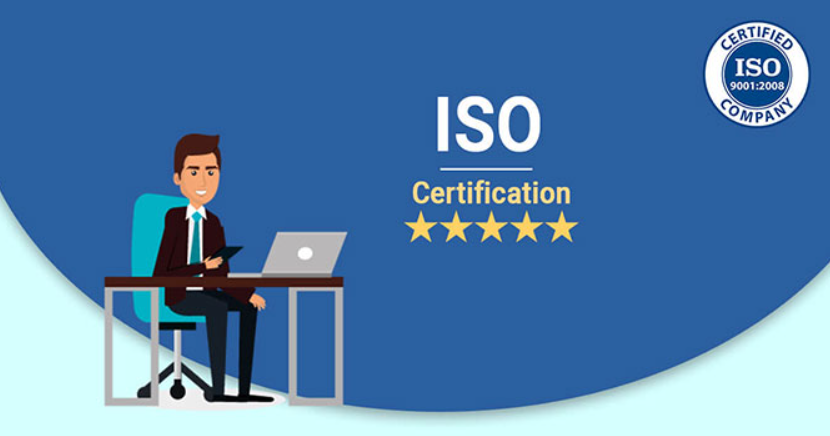
Web Design Done Well: Delightful Data Visualization Examples
LessAccounting is 100% web-based, meaning it can be accessed from anywhere and there’s no software to install on your computer. You can easily use

Much, much more affordable than other professionals
Leave legal, tax and compliance to us
1200+ authentic reviews, industry leading average of 4.4/5
ISO registration, often referred to as ISO certification, involves a series of steps that organizations need to follow to achieve compliance with the standards set by the International Organization for Standardization (ISO). Here’s a comprehensive guide on how to obtain ISO registration:
Identify the relevant ISO standard: Determine which ISO standard(s) your organization needs to comply with. Some common standards include:

Conduct a gap analysis: Assess your current processes against the requirements of the ISO standard to identify gaps.
Develop a project plan: Create a detailed plan outlining the steps, resources, and timeline needed to achieve ISO certification.
Training for employees: Ensure all relevant employees understand the ISO standard and their roles in the implementation process.
Hire or consult with an expert: Consider hiring an ISO consultant to guide you through the process or training internal staff to become experts.
Documentation: Develop the necessary documentation, including policies, procedures, and records, to meet ISO requirements.
Implementation: Apply the documented processes and procedures throughout your organization.
Internal audits: Conduct internal audits to ensure processes are followed and to identify areas for improvement.
Conduct a pre-assessment audit: An internal review or a third-party pre-assessment audit can help identify any remaining gaps before the official audit.
Choose an accredited certification body: Select a reputable, accredited certification body to perform the audit. Accreditation ensures the certification body is recognized and meets international standards.
Stage 1 Audit (Documentation Review): The certification body reviews your documentation to ensure it meets ISO requirements.
Stage 2 Audit (On-Site Audit): The certification body conducts an on-site audit to verify that your processes are implemented according to the documentation.
Corrective actions: If the auditor identifies non-conformities, your organization will need to take corrective actions to address these issues.
Follow-up audit: A follow-up audit may be required to verify that non-conformities have been corrected.
Certification decision: If the audit is successful and all non-conformities are addressed, the certification body will issue the ISO certificate.
Surveillance audits: Most ISO certifications require annual surveillance audits to ensure continued compliance.
Continuous improvement: Regularly review and improve your management system to maintain compliance and improve performance.
Ensure senior management is committed to the process and provides necessary resources.
Engage employees at all levels to promote a culture of quality and continuous improvement.
Maintain open communication throughout the process to keep everyone informed and motivated.
Standards help manufacturers reduce costs, anticipate technical requirements, and increase productive and innovative efficiency. The European Commission recognizes the positive effects of standards in areas such as trade, the creation of Single Market for products and services, and innovation

ISO registration, often referred to as ISO certification, is the process by which an organization is recognized for meeting the standards set by the International Organization for Standardization (ISO). This certification indicates that the organization adheres to international standards for quality, safety, efficiency, or other specific criteria.
Benefits of ISO certification include:
Common ISO standards include:
The timeframe for ISO certification varies depending on:
Costs associated with ISO certification include:
Internal resources: Time and effort spent by your team.
A certification body is an accredited organization that conducts the ISO audit and issues the certification. It is essential to choose a reputable and accredited certification body to ensure the credibility of your certification.
A gap analysis is an assessment of your current processes compared to the requirements of the ISO standard. It identifies areas where your organization needs to make improvements to meet the standard.
Internal audits are conducted by your organization to ensure that your processes comply with the ISO standard. These audits help identify areas for improvement and prepare you for the certification audit.
The certification audit is conducted in two stages:
If non-conformities are found, your organization must take corrective actions to address these issues. A follow-up audit may be required to verify that the corrective actions have been implemented.
ISO certifications are typically valid for three years, with annual surveillance audits required to ensure ongoing compliance. After three years, a recertification audit is needed.
A surveillance audit is a periodic audit conducted by the certification body to ensure that your organization continues to comply with the ISO standard. These audits usually occur annually.
Yes, ISO certification can be revoked if your organization fails to comply with the standards during surveillance audits or does not address non-conformities adequately.
Maintaining ISO certification involves:








LessAccounting is 100% web-based, meaning it can be accessed from anywhere and there’s no software to install on your computer. You can easily use

LessAccounting is 100% web-based, meaning it can be accessed from anywhere and there’s no software to install on your computer. You can easily use

LessAccounting is 100% web-based, meaning it can be accessed from anywhere and there’s no software to install on your computer. You can easily use